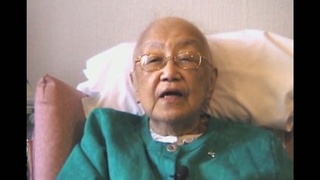Interviews
The various realities of Nikkei in Latin America (Spanish)
(Spanish) I think that the development of this thing called Nikkei has been somewhat distinct from country to country. I’m referring to Latin America in general. Through the Pan-American Association of Nikkei, I’ve had the opportunity to come into contact with various Nikkei realities, and yes, there are some common roots, however there are also certain differences. Perhaps the greatest difference I see comes from the number of Japanese that settled in a given place. In places where there are a lot of Japanese, there are obviously Japanese schools. There are Japanese clubs, Japanese churches, or Buddhist temples – whatever, I don’t know! By contrast, in countries like Chile, there was none of that. Therefore, in the development of countries where there were a lot of Japanese, maybe the customs, the culture lasted longer. Maybe it wasn’t growing, but it lasted longer in those places. In the case of Chile, in my case, I think we drifted quite a bit towards adapting to Chilean society, and as fast as possible in order to get by as best we could. So, for example, within this context you see that in religion, for example, in Chile there’s no…uh…the majority religion is Catholicism, and perhaps therefore all of us ended up embracing that religion. Something else, for example, is that since the nucleus of Japanese and Nikkei was so small, weddings, marriages to locals was much greater than in other places. Naturally, this led to, among other things, a very rapid loss of the language.
Date: October 7, 2005
Location: California, US
Interviewer: Ann Kaneko
Contributed by: Watase Media Arts Center, Japanese American National Museum
Explore More Videos

The reason he came to the United States (Japanese)
(1949 - 2019) Taiko player. Founded five taiko groups in Southern California

Grandfather's arrival in the U.S., experiencing discrimination
(b. 1939) Japanese American painter, printmaker & professor

Japanese American community life
(b. 1939) Japanese American painter, printmaker & professor

Starting over after the war: denial of all things Japanese
(b. 1923) Nisei from Washington. Resisted draft during WWII.

Mother's immigration to U.S. as a treaty merchant
(b. 1927) Japanese American Nisei. Family voluntarily returned to Japan during WWII.

Why her parents came to Canada
(1918-2004) Interned in Slocan during World War II. Active member of the Japanese Canadian community.

Family background of Fredrick Yoshihide Sasaki
(b. 1918) Issei businessman in Canada

Arranged marriage
(b.1912) Japanese Canadian Issei. Immigrated with husband to Canada in 1931

Her early life in Canada
(b.1912) Japanese Canadian Issei. Immigrated with husband to Canada in 1931

Coming to America
(b.1943) Shin-issei grand master of taiko; founded San Francisco Taiko Dojo in 1968.

The reason for coming to Japan
(b. 1967) Hawai`i-born professional fighter in Japan



Peru Shimpo for the Nikkei community (Spanish)
(b. 1937) Professional journalist

Yobiyose system in Canada
(b. 1922) Canadian Nisei who was unable to return to Canada from Japan until 1952
